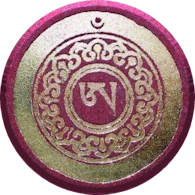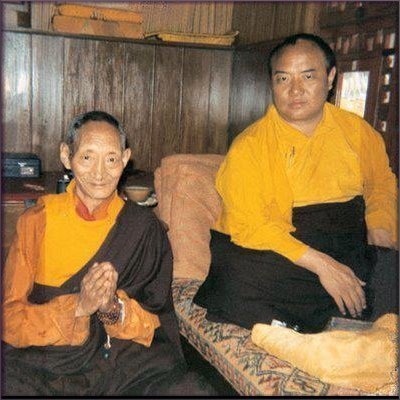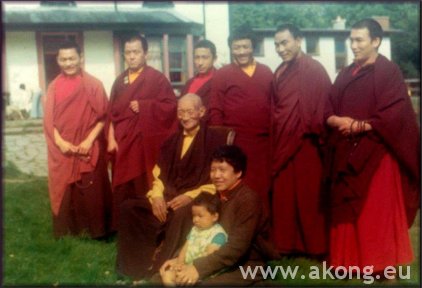
Setting Firm Bases for the Kagyu
Teaching in Europe
 In his private meetings in India with the XVIth Gyalwang Karmapa after the departure of Chogyam Trungpa Rinpoché, Akong Rinpoché invited His Holiness to come to the West. Although the latter agreed in principle, both concluded that it was still too early for that to happen in practice, as the terrain was not sufficiently prepared. The Karmapa therefore recommended that the Very Venerable
Kalu Rinpoché (“Khenpo Kalu” as he was known in those earlier years) should visit Samye Ling,
the USA and Europe to establish dharma for a few years. This would make a visit by His Holiness more meaningful.
In his private meetings in India with the XVIth Gyalwang Karmapa after the departure of Chogyam Trungpa Rinpoché, Akong Rinpoché invited His Holiness to come to the West. Although the latter agreed in principle, both concluded that it was still too early for that to happen in practice, as the terrain was not sufficiently prepared. The Karmapa therefore recommended that the Very Venerable
Kalu Rinpoché (“Khenpo Kalu” as he was known in those earlier years) should visit Samye Ling,
the USA and Europe to establish dharma for a few years. This would make a visit by His Holiness more meaningful.
Kalu Rinpoché was the lineage holder of the Shangpa Kagyu tradition and had, in Tibet, been meditation master of the great Palpung monastery in Kham. Kalu Rinpoché agreed to the Karmapa's instruction and visited Europe at the end of 1972, in response also to the requests of both Akong Rinpoché and his own disciples (mainly from France). He had already toured the USA and Canada in 1971, founding a centre in the latter country. At that early period of dharma development, it was still too premature to invite the four main Kagyu “heart-sons” who were in the final stages of their education. Among their main teachers in Rumtek monastery were Khenchen Thrangu Rinpoché and Khenpo Tsultrim Gyamtso Rinpoché, who later were to become the founding pillars of dharma theory in Samye Ling. In particular, the ninth Thrangu Rinpoché was to become more and more recognised as the main holder of the Kagyu theoretical tenets and Akong Rinpoché knew that, when the time was right, he should come to the West.Furthermore, in a broad, non-sectarian approach, Rinpoché wanted the great lamas of the other main Tibetan traditions to visit Samyé Ling and extended various invitations. As he told me,
“At that time, the West did not hold so much appeal for the Tibetan masters as it did later. They were primarily concerned with what was happening in India in those early days.”
 Although Kalu Rinpoché made an initial visit in 1972, a real development occurred in 1974 when he came accompanied by a significant party including five lamas freshly out of long-term retreat, along with a full kit of ritual implements and musical instruments. On the evening of their arrival, the monks set themselves up on the front steps of Johnstone House and played ja-ling
and ra-dong for over an hour. These haunting and totally-new sounds echoed along the Scottish valley, in the chill, crisp air beneath a full moon and starry night, heralding in a new era in the centre’s development.
Although Kalu Rinpoché made an initial visit in 1972, a real development occurred in 1974 when he came accompanied by a significant party including five lamas freshly out of long-term retreat, along with a full kit of ritual implements and musical instruments. On the evening of their arrival, the monks set themselves up on the front steps of Johnstone House and played ja-ling
and ra-dong for over an hour. These haunting and totally-new sounds echoed along the Scottish valley, in the chill, crisp air beneath a full moon and starry night, heralding in a new era in the centre’s development.
To Akong Rinpoché’s great satisfaction, Kalu Rinpoché gave traditional Buddhist Refuge, precepts, bodhisattva vow and empowerments to those who wanted them or needed them for their practice. Kalu Rinpoché also gave many dharma teachings. This seemed to seal the end of the hippie and wild era of the centre and made it a truly Buddhist centre. More importantly, it drew in more people and set them on the path of practice, thereby making a future audience for the Gyalwang Karmapa.
......continue to the next part of the story: Rinpoché's role in the 1974 & 1977 visits of the Karmapa
